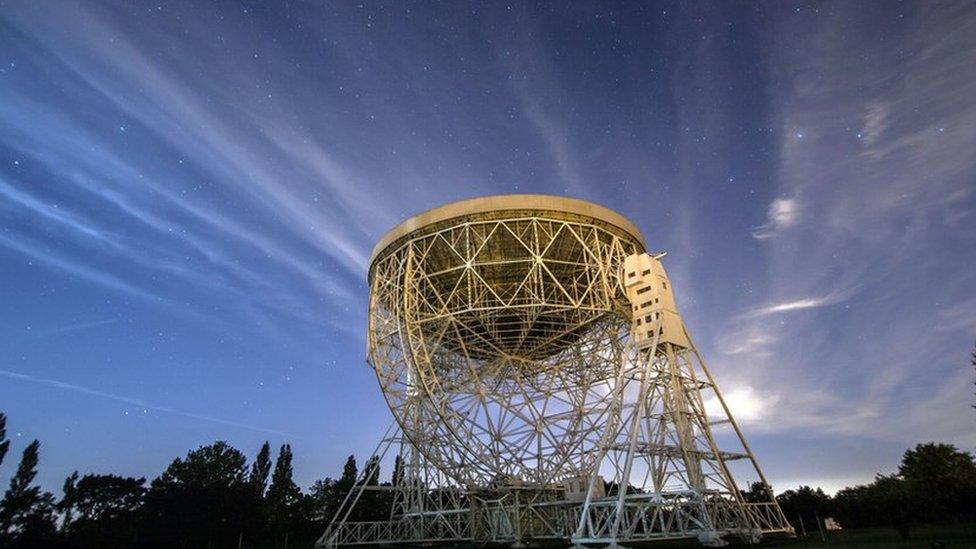Jodrell Bank: Hat box inspired Lovell Telescope design, engineer claimed
- Published
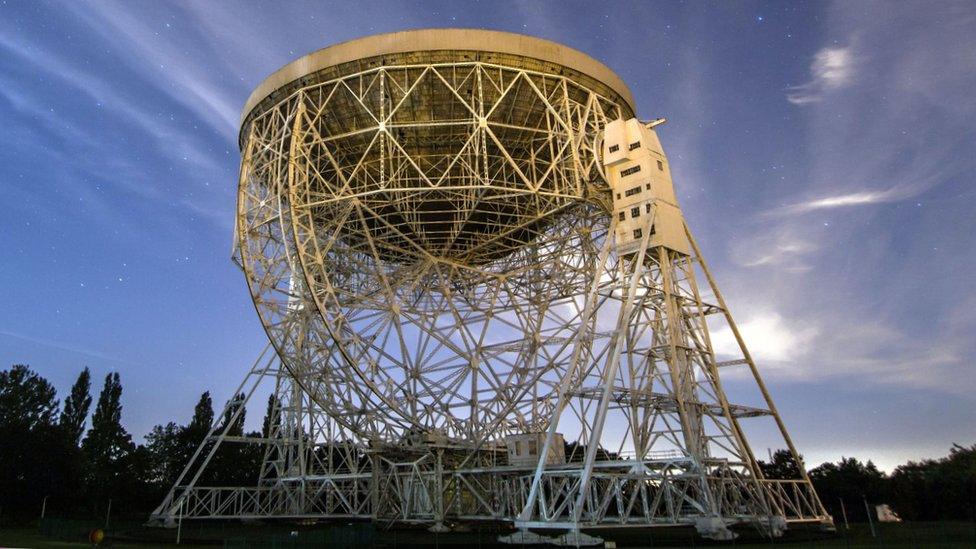
Barry Wade claimed Sir Bernard Lovell had a "lightbulb moment" while getting ready for work
A world famous telescope's design was inspired by a hat box, the daughter of one of those who built it has said.
Isabel Hunt said her father Barry Wade helped build the Lovell Telescope at Jodrell Bank Observatory in the 1950s.
She said he told a story that while searching for a way of balancing the huge structure, project leader Sir Bernard Lovell had a "lightbulb moment" as he opened his hat box one morning.
Mr Wade always called it the Hat Box telescope as a result, she said.
She said her father had always told the story of the astronomer's revelation, as it was "one of my father's lasting memories from his time [at the site]", but she did not know for certain if it it was "true or not".
Prof Tim O'Brien, associate director of the University of Manchester's Jodrell Bank Centre for Astrophysics, said it "wouldn't surprise me if there were some truth in it".
"The team certainly drew their inspiration from far and wide," he said.
"Nobody in the world had built anything like this before and there were all sorts of engineering problems to overcome.
'Recycled gun turrets'
Ms Hunt, who is the National Lottery Heritage Fund's (NLHF) executive director, told her father's story ahead of the opening of the Cheshire site's First Light Pavilion, which has been partly-funded by her organisation.
The £21.5m building, which opens on Saturday, will house an exhibition telling the story of the Unesco World Heritage Site, along with a planetarium, a temporary exhibitions gallery and a cafe.
Ms Hunt also shared previously unseen photos of the early days of the site, which were taken by her late father while he was a trainee engineer there in 1951 and 1952.
She said her father "spoke very fondly of his time at Jodrell Bank, and along with all the other fascinating history being shared as part of the First Light Project, I am sure these stories will inspire the next generation of engineers".

Mr Wade's previously unseen photos show the building of prototype telescopes at the Cheshire site
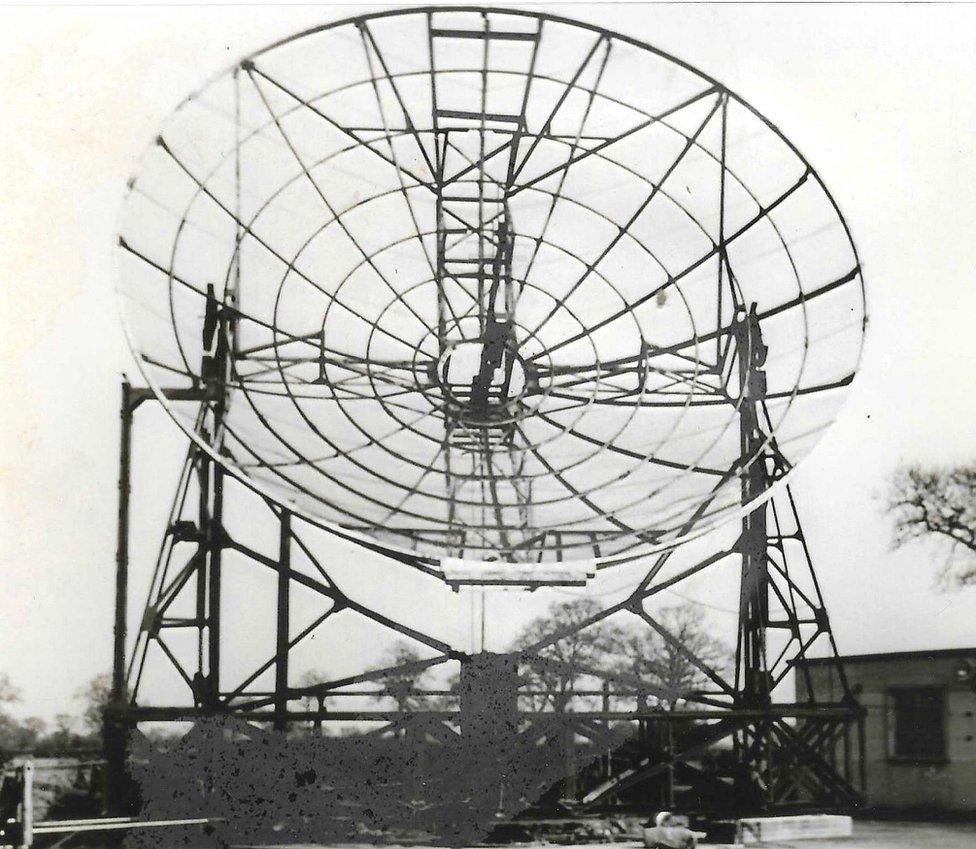
The engineer worked at the site in the early 1950s and captured the early moments of its construction
Prof O'Brien said the story of Jodrell Bank "takes us from muddy fields in Cheshire to supermassive black holes in distant galaxies, but at its core are the people".
"One of the wonderful things about developing this exhibition has been talking to so many people for whom the telescope has a special place in their hearts."
He said that he had not heard the story of the hat box before, but could believe it, as the pioneers at the site had many problems to overcome, with the issue of the dish being one of the biggest.
"Supporting the weight of the gigantic steel bowl whilst also being able to tip and turn it to precisely lock on to something far away in the depths of space was an incredible achievement for the time," he said.
"Amazingly, it still tips today on gear racks recycled from the gun turrets of World War One battleships."
NLHF chief executive Eilish McGuinness said the fund had given £12,5m to the new pavilion project "so that the site's powerful human stories of curiosity, exploration and discovery could be shared with the public".
She said the "stunning new building" would have a "fantastic impact, delighting and inspiring every visitor, including the next generation of scientists following in the footsteps of Sir Bernard Lovell".

The Lovell Telescope

First conceived by Sir Bernard Lovell in 1948, work began on the Lovell Telescope in the early 1950s
The original design presented many engineering problems and redesigns were required as, in an age before digital computing, the calculations for the cylindrical space-frame supporting the bowl alone took a year
Its designers also had to work out how to move 2,000 tonnes with accuracy at a quarter of an inch per minute and how to compensate for the changing weight distribution as the 250ft (76m) diameter dish was moved up and down as it turned
It came into operation in 1957 and has subsequently been upgraded several times, while being used to study meteors, the moon and planets, the sun, the Northern lights, Earth's ionosphere and deep space galactic and extragalactic radio sources, as well as tracking both Russian and American space missions
Source: Historic England, external

Why not follow BBC North West on Facebook, external, Twitter, external and Instagram, external? You can also send story ideas to northwest.newsonline@bbc.co.uk
Related topics
- Published4 June 2020
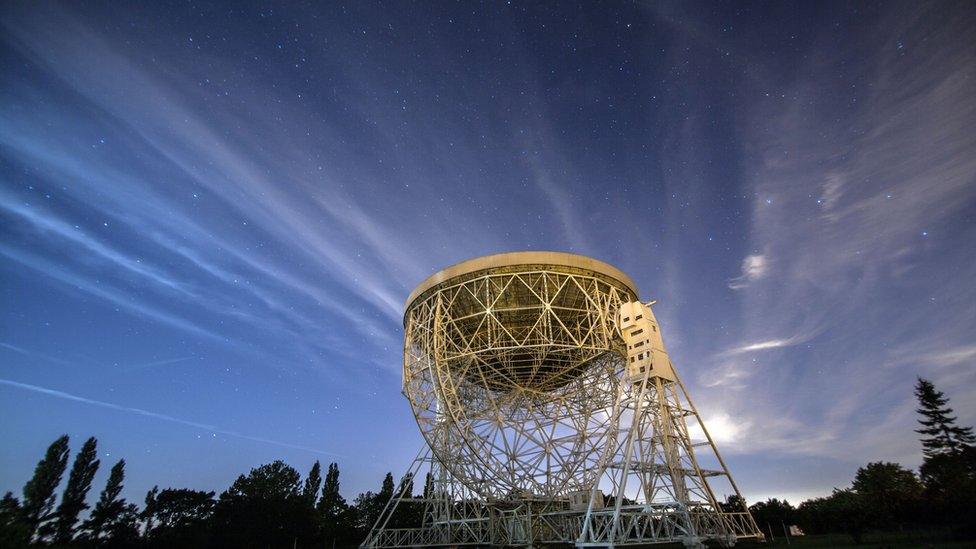
- Published2 August 2017
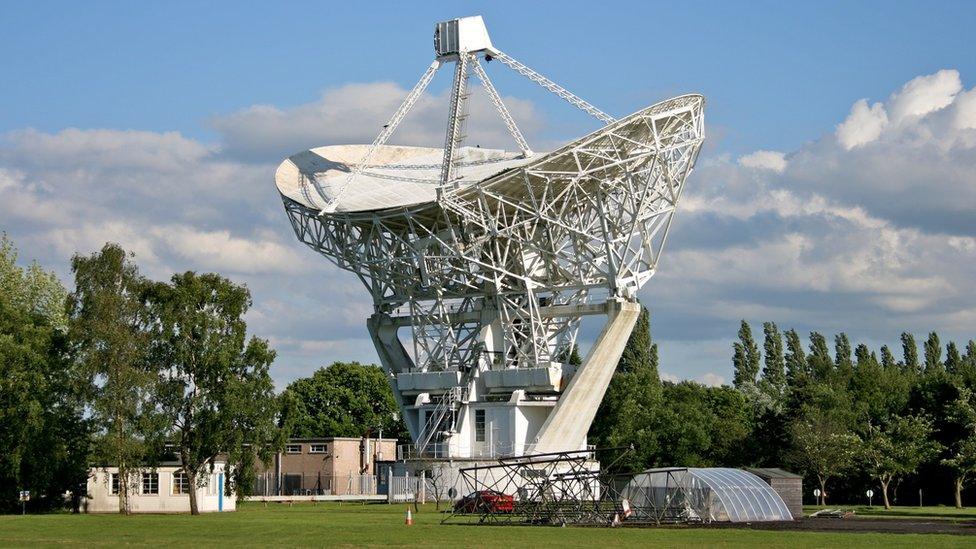
- Published20 July 2019
